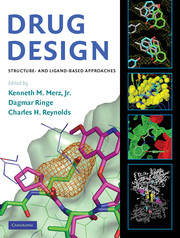1 - Progress and issues for computationally guided lead discovery and optimization
Published online by Cambridge University Press: 06 July 2010
Summary
INTRODUCTION
Since the late 1980s there have been striking advances, fueled by large increases in both industrial and NIH-funded academic research, that have revolutionized drug discovery. This period has seen the introduction of high-throughput screening (HTS), combinatorial chemistry, PC farms, Linux, SciFinder, structure-based design, virtual screening by docking, free-energy methods, absorption/distribution/metabolism/excretion (ADME) software, bioinformatics, routine biomolecular structure determination, structures for ion channels, G-protein-coupled receptors (GPCRs) and ribosomes, structure/activity relationships (SAR) obtained from nuclear magnetic resonance (SAR by NMR), fragment-based design, gene knockouts, proteomics, small interfering RNA (siRNA), and human genome sequences. The result is a much-accelerated progression from identification of biomolecular target to lead compound to clinical candidate. However, a serious concern is that the dramatic increase in drug discovery abilities and expenditures has not been paralleled by an increase in FDA approvals of new molecular entities. High demands for drug safety, broader and longer clinical trials, too much HTS, too little natural products research, and effective generic drugs for many once-pressing afflictions have all been suggested as contributors. Numerous corporate mergers and acquisitions may have also had adverse effects on productivity through distractions of reorganization and integration. Nevertheless, one should consider what the success would have been in the absence of the striking technical advances. Certainly, progress with some critical and challenging target classes such as kinases would have been greatly diminished, and the adverse impact on many cancer patients would have been profound.
- Type
- Chapter
- Information
- Drug DesignStructure- and Ligand-Based Approaches, pp. 1 - 14Publisher: Cambridge University PressPrint publication year: 2010
References
- 1
- Cited by



